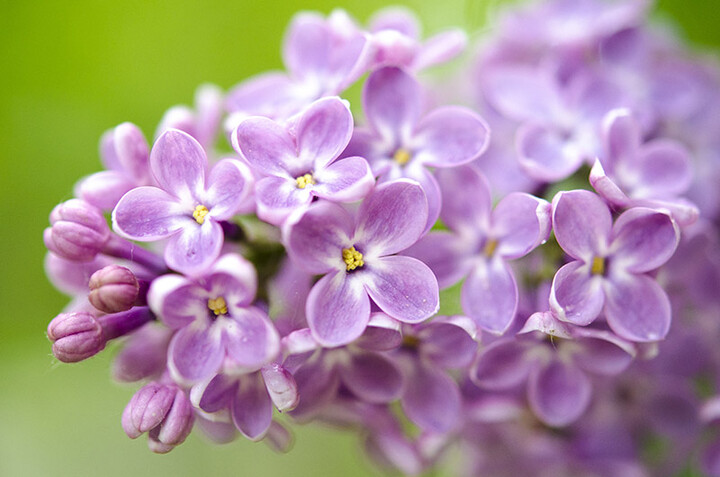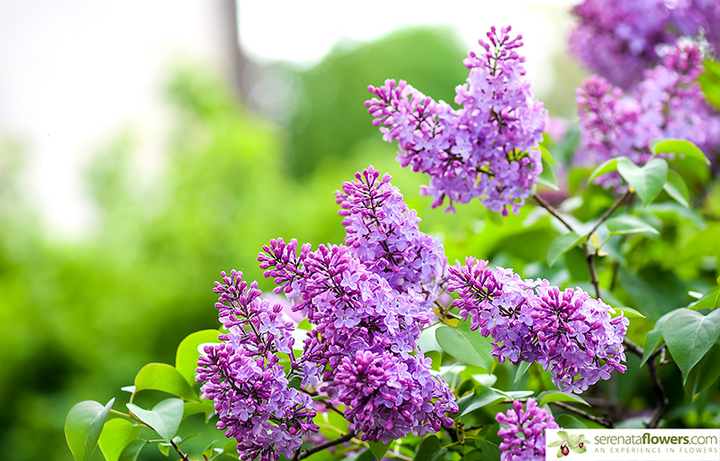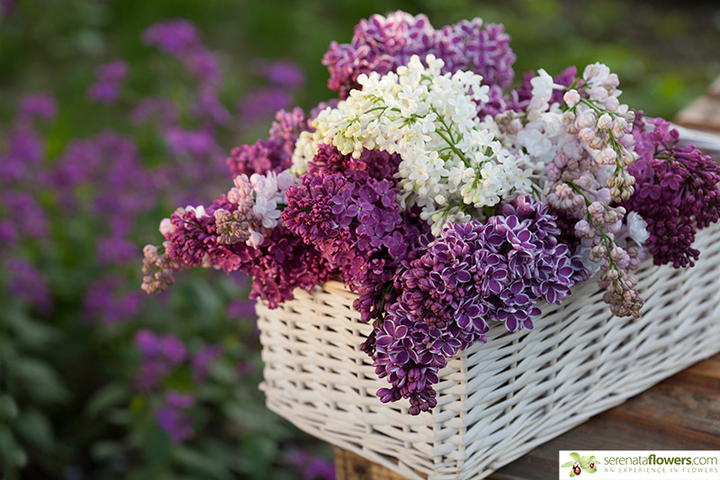
The lilac plant (botanical name Syringa) is a genus of 12 species of flowering woody plants, all of which come from the olive family (Oleaceae).
These particular plants are native to woodland and scrub and are originally from southeastern Europe and eastern Asia.
They are now widely cultivated in temperate areas elsewhere.
These small trees range in size from two to 10 metres, and boast stems measuring up to 20 to 30 centimetres in diameter.
The leaves boast a simple heart-shape and are often positioned in whorls of three.
Lilac types
There are a number of species of lilac available, some of which include:
·Syringa Vulgaris – L. – common lilac – native to Balkans; naturalized in western and central Europe, and many scattered locations in North America.
·Syringa emodi ex Royle – Himalayan lilac – native to northern India, Pakistan, Tibet and Nepal.
·Syringa Komarowii – C.K.Schneid. – native to central China, and specifically the regions of Gansu, Hubei, Shaanxi, Sichuan and Yunnan.
·Syringa Josikaea – J.Jacq. ex Rchb.f. – native to the Carpathian Mountains of Romania and Ukraine.
·Syringa Oblata Subsp. Dilatata – Nakai – native to Korea, as well as Jilin and Liaoning in northeast China.
·Syringa Oblata – Lindl. – Found in Korea, Gansu, Hebei, Henan, Jilin and Liaoning, as well as being native to Inner Mongolia, Ningxia, Qinghai, Shaanxi, Shandong, Shanxi and Sichuan.
·Syringa Persica – L. (syn Syringa protolaciniata) – Persian lilac – native to Afghanistan, Pakistan, western Himalayas, Gansu and Qinghai.
·Syringa Pinnatifolia – Hemsl. – Found in Gansu, Inner Mongolia, Ningxia, Qinghai, Shaanxi and Sichuan.
·Syringa Pinetorum – W.W.Sm. – Commonly found in Sichuan, Tibet and Yunnan.
·Syringa Pubescens – Turcz. – Korea, Gansu, Hebei, Henan, Hubei, Jilin, Liaoning, Ningxia, Qinghai, Shaanxi, Shandong, Shanxi and Sichuan.
·Syringa Reticulata – (Blume) H.Hara (syn. pekinensis) – Japanese tree lilac – Primorye, Japan, Korea, Gansu, Hebei, Heilongjiang, Henan, Jilin, Liaoning, Inner Mongolia, Ningxia, Shaanxi, Shanxi and Sichuan.
·Syringa Tomentella – Bureau & Franch. – Common in Sichuan, Tibet and Yunnan.
·Syringa Villosa – Vahl – Primorye – Found in Korea, Hebei, Shanxi, Heilongjiang, Jilin and Liaoning.
Recommended varieties
The most prevalent and perfumed lilacs are of the S. vulgaris variety.
For best results and for an early bloom, opt for the ‘Charles Joly’ variant, which boasts a double magenta.
If you’re looking for a mid-season variant, choose the likes of ‘Monge’, a dark reddish purple, or ‘Firmament’, a fine blue lilac.
Late season plants comprise species such as ‘Miss Canada’, a reddish-pink variant, and ‘Donald Wyman’, a single purple lilac.
Although traditional lilacs enjoy cold weather, a few are able to thrive in much warmer climates, including the likes of the cutleaf lilac, which comes in the shape of a fragrant pale lavender.
Syringa patula (also known as ‘Miss Kim’), another option for warmer climates, is an elegant shrub with pale lilac-blue flowers that disappear into shades of white.
When do lilac flowers bloom?

The flowers bloom in spring, with each flower measuring between five and 10 millimeters in diameter, and with all boasting a four-lobed corolla, a fertile stamen and a stigma.
These blooms are purple in hue and range between light and dark lilac.
Some species boast shades of pale yellow, white and pink, with certain types showcasing a dark burgundy hue.
The flowers have a strong fragrance and grow in large panicles.
Flowering tends to take place between mid spring and early summer, but this does depend on the species.
The fruit comes in the shape of a dry, brown capsule, which splits in two at maturity, freeing two winged seeds.
Cultivation and uses
Lilacs are prevalent plants, grown in both gardens and parks in various locations.
There are numerous cultivars and hybrids to choose from, with the French lilac showcasing a modern double-flowered cultivar.
Light and water requirements
Lilacs grow most effectively in well-drained soils, particularly those with chalk.
They produce more flowers if left unpruned and grow well on old wood.
Tips for growing beautiful lilac plants
·Lilacs flourish in fertile, rich, well-drained soil that is neutral to alkaline. For best results, the soil should be at a pH of around 7.0. If you’re unable to obtain good quality soil, add compost to enrich the mixture.
·Choose a location that enjoys full sunlight – six hours per day is preferred and will encourage lilac plants to bloom well.
·It’s also important to choose a site that drains well as lilacs won’t bloom with too much water.
·Plant in either spring or autumn for best results.
·The easiest way to grow these plants is by using an offshoot from another plant. It will take a while for the flowers to show, however a patient gardener will be rewarded with huge, fragrant blossoms.
·Another option is to transplant lilacs from a nursery. Plant the lilac between two and three inches deeper than it grew in the nursery, adding topsoil around the roots. Once placed in the ground, water and add more topsoil.
·If planting numerous lilac bushes, place between five and 15 feet apart.
Additional tips
To advance the flowering of lilacs, avoid placing them next to grass.
You can prevent grass from growing around these plants by placing a piece of landscape cloth measuring 16 to 24-inches around the bushes.
Cover this with bark or stone to keep the grass at bay.
If you wish to display lilac flowers in your home, you can force a winter bouquet from cut branches.
Simply bruise the cut ends before placing them in water and spray the branches regularly.
Keep them in a cool place initially, moving them to a warmer area at first bloom.
Pests and diseases

As with a number of plants, lilacs are prone to pests and diseases.
These include both snails and slugs. Another ailment to attack lilac plants is powdery white mildew.
This tends to attack after a warm, humid summer.
Although unsightly, this won’t actually affect the plant’s health and is best ignored.
Symbolism
Lilacs are traditionally said to symbolise love and the joy of youth.
In Lebanon, Greece and Cyprus, this specie of plant is strongly associated with Easter celebrations, mainly because it flowers at this time.